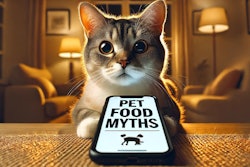
Last year, a swell of social media posts claimed Purina PetCare products were connected with various illnesses, mostly gastrointestinal issues among dogs. Accompanying the social media content, the U.S. Food and Drug Administration (FDA) received adverse event reports associated with Nestle Purina PetCare products. However, federal investigators found no conclusive evidence linking the health complaints to Purina pet food. Social media activity may have played a role in propagating the perceived connection between specific pet foods and pet illnesses. Eventually, the social media posts may have reached a point where their prevalence granted credence.
Social media has transformed how information spreads, forging a double-edged sword for pet food brands. On the one hand, it provides a platform for companies to engage directly with their customers, share positive stories, launch new products and build brand loyalty. During a recall, pet owners can learn of the incident quickly. On the other hand, social media also makes it easier for rumors and misinformation to spread, potentially causing reputational damage for pet food brands.
One of the most significant differences between social media and traditional media is the speed and scale at which information, including rumors, can spread. In the past, if a pet owner was concerned about a pet food product, they could contact the company on the phone or by sending a letter. That pet owner might have shared their experience with their veterinarian, a few friends or written a letter to the editor of a local media outlet or pet magazine. The reach was limited, and the publication process acted as a filter, often verifying claims before they reached a broader audience.
Social media, however, removes these filters. A single post on a platform like Facebook or X can be shared thousands of times in hours, reaching a global audience almost instantly. Pet owners' concerns, whether based on fact, misunderstanding, empiricism or misinformation, can rapidly gain traction. This phenomenon is amplified by algorithms prioritizing content with high engagement, often those posts that stoke fear or controversy.
Social media versus other formats
Print media, broadcast and early online news models regulated the dissemination of information. Editors and journalists served as gatekeepers, helping ensure information was vetted before reaching the public. This process, while slower, reduced the likelihood of false information spreading widely. In contrast, social media democratizes content creation and distribution, allowing anyone to publish and share information. The lack of editorial oversight means that falsehoods can be disseminated just as easily as verified facts. Plus, the visual nature of platforms like Instagram and TikTok can make rumors more compelling. A heart-tugging video or stomach-churning photo can evoke strong emotional reactions and increase the likelihood of sharing that content, churning the rumor mill faster.
The viral nature of social media means that falsehoods can spread more easily and quickly than evr before. False information often spreads faster than the truth, often because it is more sensational. In the context of the pet food industry, this can have dire consequences. Consider how readily people believed that renderers used euthanized dogs and cats in pet food ingredients. A single misleading post about a pet food recall or alleged ingredient issue can cause widespread concern among pet owners, leading to a loss of trust and a potential drop in sales. Moreover, the echo chamber effect of social media can exacerbate the situation. Users tend to engage with content that aligns with their existing beliefs, and algorithms reinforce this by showing them similar content. This can create a feedback loop where false information is repeatedly reinforced, making it harder for the truth to break through.
Mitigating the effects of social media rumors about pet foods
For pet food brands, managing the impact of social media rumors requires a proactive approach. The value of transparency is clear. Companies should be quick to address concerns and provide clear, accurate information. Engaging directly with consumers on social media, monitoring for potential issues, and responding swiftly can help mitigate the spread of misinformation. Preparing draft press statements for potential events can save time if that problem even occurs. Likewise, running mock emergencies can help a pet food brand prepare for real recalls or social media scandals.
Part of being proactive means reaching out to trusted influencers on social media and building strong relationships with them. These influencers can help counteract false information. These voices can lend credibility and help correct the narrative when rumors arise. While social media presents numerous opportunities for pet food brands when building these relationships with influencers and pet owners, social media also poses significant challenges, particularly in the realm of rumor management. The speed, reach and viral potential of social media mean that falsehoods can spread quickly and widely, often outpacing the truth. By understanding the dynamics of social media and taking proactive steps to manage their online presence, pet food brands can better navigate this complex landscape and protect their reputation.

















